Arnaud Bergeron
Tapered Off-Policy REINFORCE: Stable and efficient reinforcement learning for LLMs
Mar 19, 2025Abstract:We propose a new algorithm for fine-tuning large language models using reinforcement learning. Tapered Off-Policy REINFORCE (TOPR) uses an asymmetric, tapered variant of importance sampling to speed up learning while maintaining stable learning dynamics, even without the use of KL regularization. TOPR can be applied in a fully offline fashion, allows the handling of positive and negative examples in a unified framework, and benefits from the implementational simplicity that is typical of Monte Carlo algorithms. We demonstrate the effectiveness of our approach with a series of experiments on the GSM8K and MATH reasoning benchmarks, finding performance gains for training both a model for solution generation and as a generative verifier. We show that properly leveraging positive and negative examples alike in the off-policy regime simultaneously increases test-time accuracy and training data efficiency, all the while avoiding the ``wasted inference'' that comes with discarding negative examples. We find that this advantage persists over multiple iterations of training and can be amplified by dataset curation techniques, enabling us to match 70B-parameter model performance with 8B language models. As a corollary to this work, we find that REINFORCE's baseline parameter plays an important and unexpected role in defining dataset composition in the presence of negative examples, and is consequently critical in driving off-policy performance.
Introducing Milabench: Benchmarking Accelerators for AI
Nov 18, 2024



Abstract:AI workloads, particularly those driven by deep learning, are introducing novel usage patterns to high-performance computing (HPC) systems that are not comprehensively captured by standard HPC benchmarks. As one of the largest academic research centers dedicated to deep learning, Mila identified the need to develop a custom benchmarking suite to address the diverse requirements of its community, which consists of over 1,000 researchers. This report introduces Milabench, the resulting benchmarking suite. Its design was informed by an extensive literature review encompassing 867 papers, as well as surveys conducted with Mila researchers. This rigorous process led to the selection of 26 primary benchmarks tailored for procurement evaluations, alongside 16 optional benchmarks for in-depth analysis. We detail the design methodology, the structure of the benchmarking suite, and provide performance evaluations using GPUs from NVIDIA, AMD, and Intel. The Milabench suite is open source and can be accessed at github.com/mila-iqia/milabench.
Automatic differentiation in ML: Where we are and where we should be going
Oct 26, 2018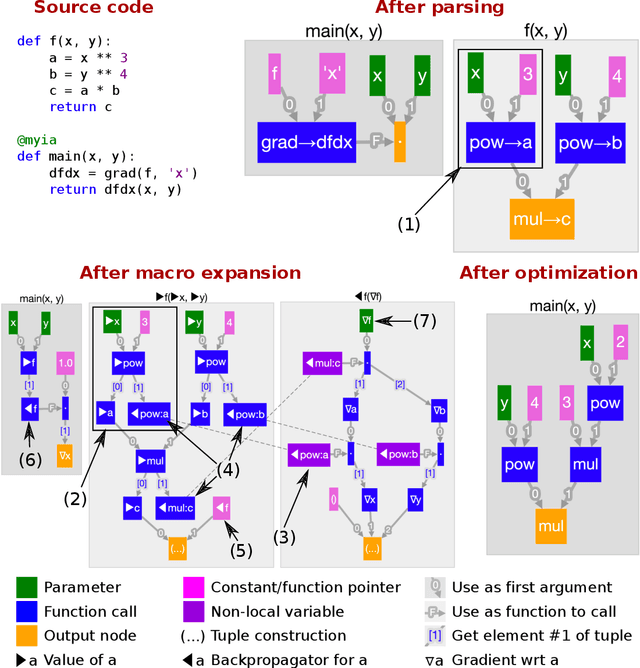
Abstract:We review the current state of automatic differentiation (AD) for array programming in machine learning (ML), including the different approaches such as operator overloading (OO) and source transformation (ST) used for AD, graph-based intermediate representations for programs, and source languages. Based on these insights, we introduce a new graph-based intermediate representation (IR) which specifically aims to efficiently support fully-general AD for array programming. Unlike existing dataflow programming representations in ML frameworks, our IR naturally supports function calls, higher-order functions and recursion, making ML models easier to implement. The ability to represent closures allows us to perform AD using ST without a tape, making the resulting derivative (adjoint) program amenable to ahead-of-time optimization using tools from functional language compilers, and enabling higher-order derivatives. Lastly, we introduce a proof of concept compiler toolchain called Myia which uses a subset of Python as a front end.
Theano: A Python framework for fast computation of mathematical expressions
May 09, 2016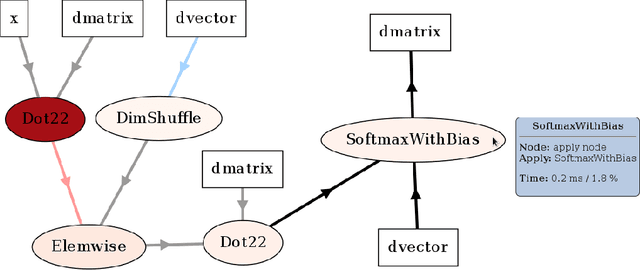
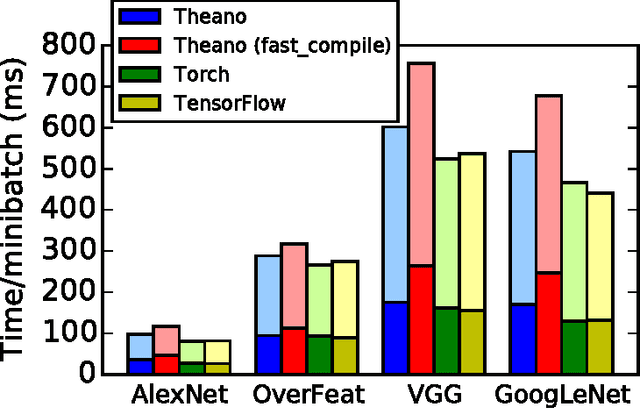
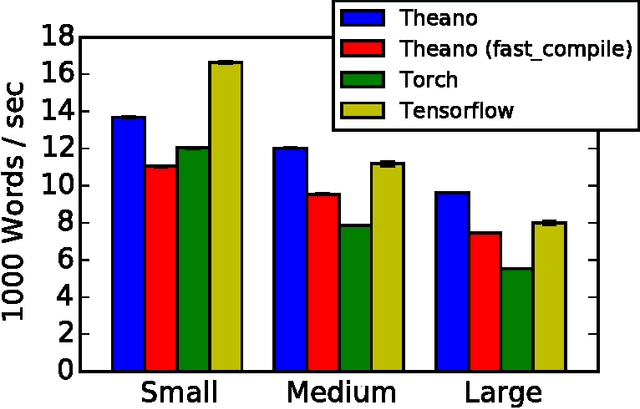
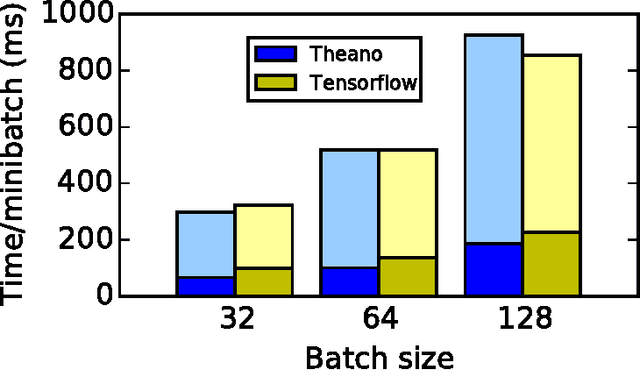
Abstract:Theano is a Python library that allows to define, optimize, and evaluate mathematical expressions involving multi-dimensional arrays efficiently. Since its introduction, it has been one of the most used CPU and GPU mathematical compilers - especially in the machine learning community - and has shown steady performance improvements. Theano is being actively and continuously developed since 2008, multiple frameworks have been built on top of it and it has been used to produce many state-of-the-art machine learning models. The present article is structured as follows. Section I provides an overview of the Theano software and its community. Section II presents the principal features of Theano and how to use them, and compares them with other similar projects. Section III focuses on recently-introduced functionalities and improvements. Section IV compares the performance of Theano against Torch7 and TensorFlow on several machine learning models. Section V discusses current limitations of Theano and potential ways of improving it.
Theano: new features and speed improvements
Nov 23, 2012


Abstract:Theano is a linear algebra compiler that optimizes a user's symbolically-specified mathematical computations to produce efficient low-level implementations. In this paper, we present new features and efficiency improvements to Theano, and benchmarks demonstrating Theano's performance relative to Torch7, a recently introduced machine learning library, and to RNNLM, a C++ library targeted at recurrent neural networks.
Deep Self-Taught Learning for Handwritten Character Recognition
Sep 18, 2010



Abstract:Recent theoretical and empirical work in statistical machine learning has demonstrated the importance of learning algorithms for deep architectures, i.e., function classes obtained by composing multiple non-linear transformations. Self-taught learning (exploiting unlabeled examples or examples from other distributions) has already been applied to deep learners, but mostly to show the advantage of unlabeled examples. Here we explore the advantage brought by {\em out-of-distribution examples}. For this purpose we developed a powerful generator of stochastic variations and noise processes for character images, including not only affine transformations but also slant, local elastic deformations, changes in thickness, background images, grey level changes, contrast, occlusion, and various types of noise. The out-of-distribution examples are obtained from these highly distorted images or by including examples of object classes different from those in the target test set. We show that {\em deep learners benefit more from out-of-distribution examples than a corresponding shallow learner}, at least in the area of handwritten character recognition. In fact, we show that they beat previously published results and reach human-level performance on both handwritten digit classification and 62-class handwritten character recognition.
 Add to Chrome
Add to Chrome Add to Firefox
Add to Firefox Add to Edge
Add to Edge